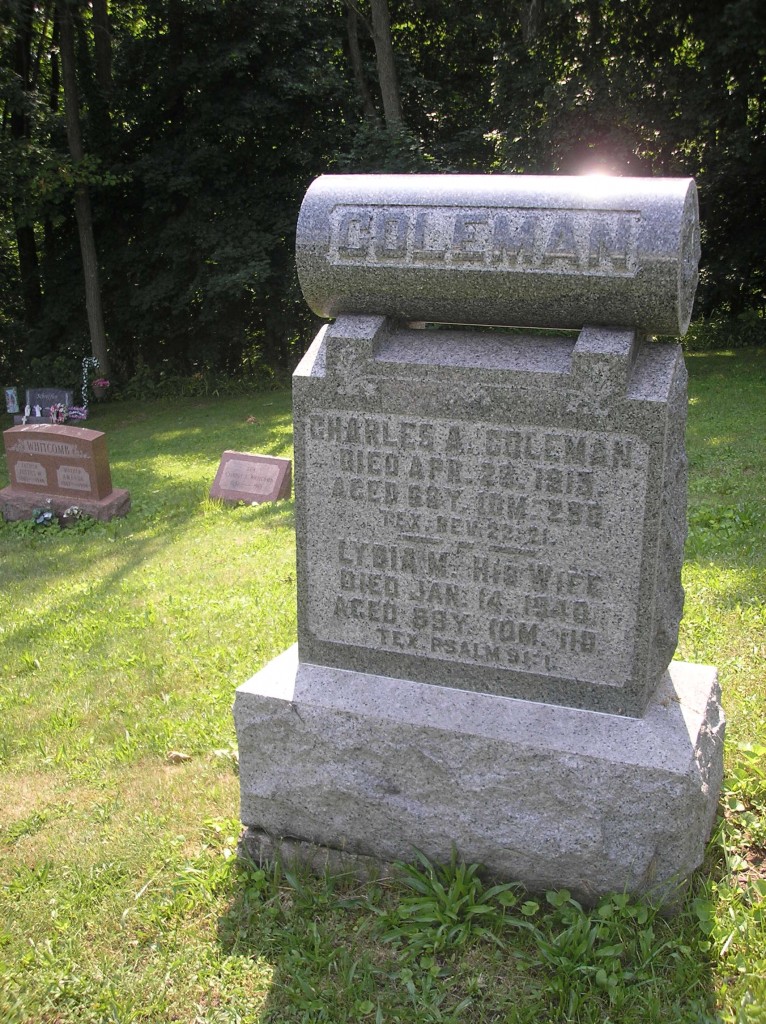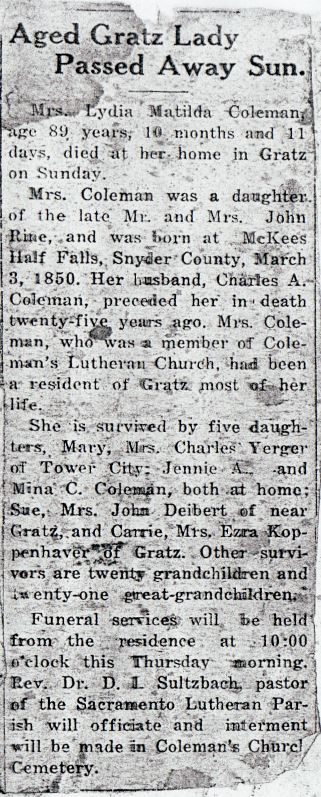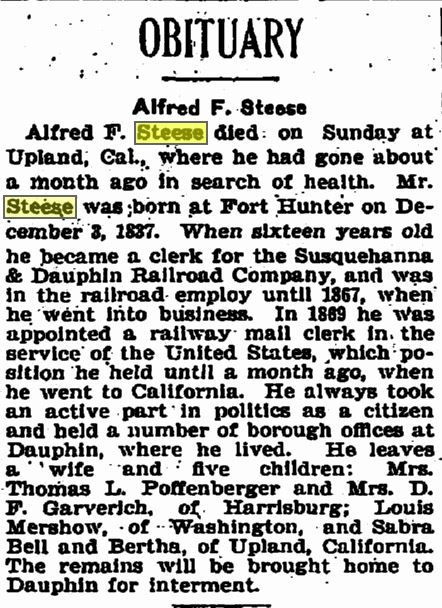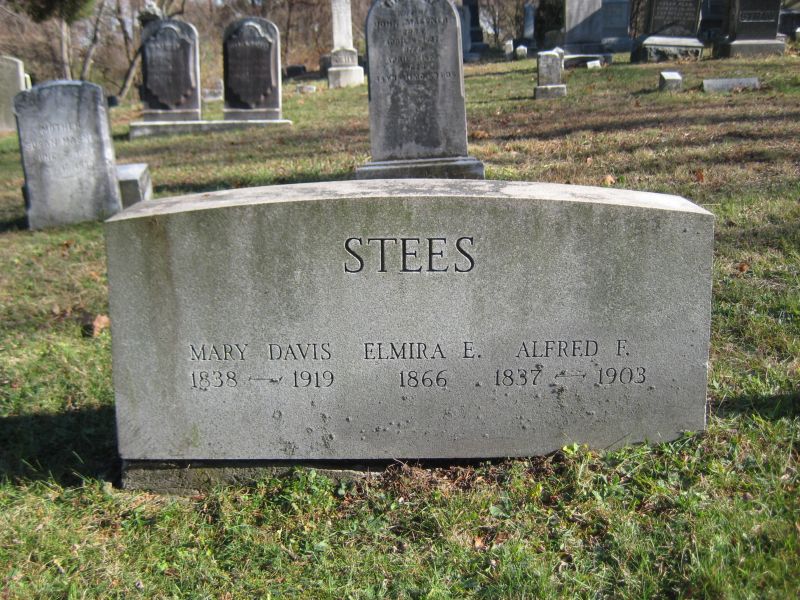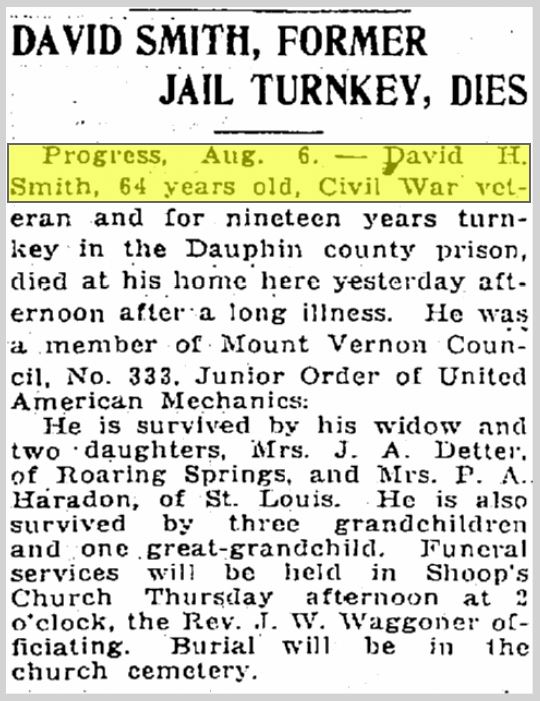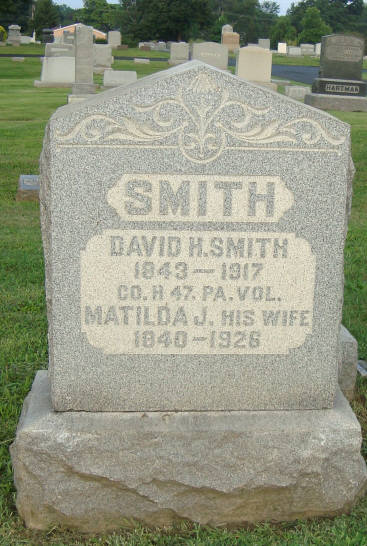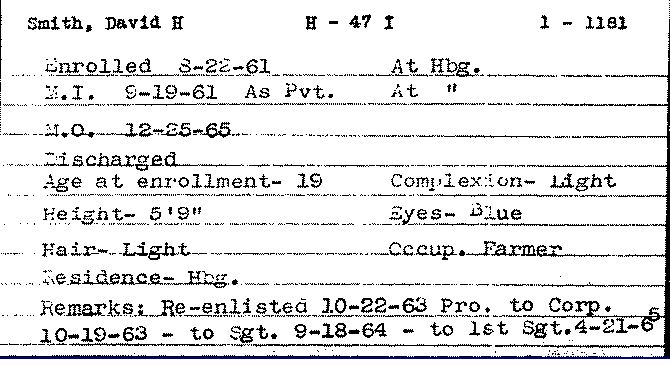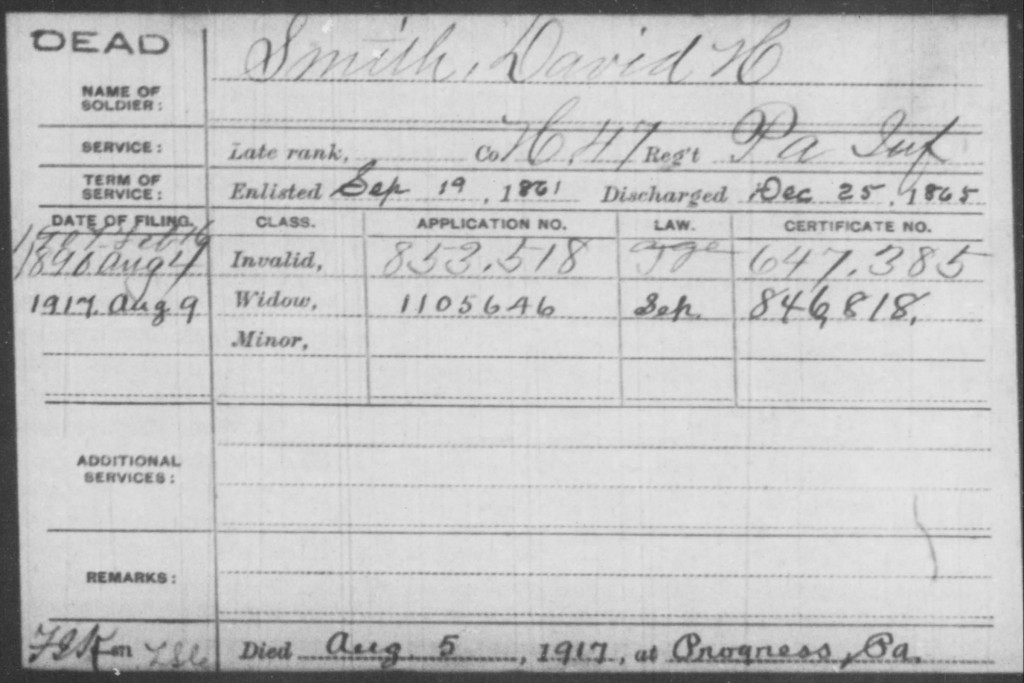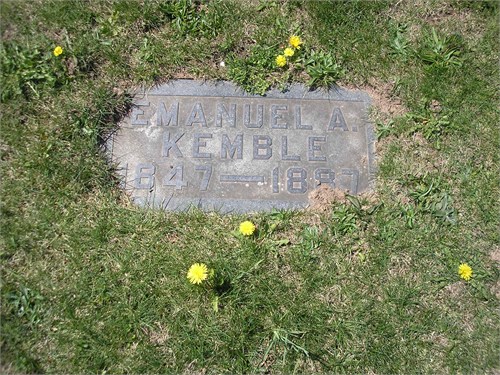Aged Widow of One-Day Civil War Veteran Died in Gratz in 1940
Posted By Norman Gasbarro on October 29, 2013
The aged widow of Charles A. Coleman, Lydia Matilda Coleman, died in Gratz, Dauphin County, Pennsylvania, 14 January 1940. Charles A. Coleman reported in Harrisburg to mustered into service in the 177th Pennsylvania Infantry, Company I, on 2 November 1862, and was discharged the same day on a Surgeon’s Certificate of Disability. There is no evidence that he ever took credit for his one day of service or called himself a veteran of the Civil War. However, his name does appear in the records of the 177th Pennsylvania Infantry. He died in 1915.
Two obituaries that appeared in local newspapers at the time of Lydia’s death are reproduced below:
GRATZ WOMAN SUCCUMBS
Mrs. Lydia Matilda Coleman, of Gratz, daughter of John Rine and his wife, was born 3 March 1850, baptized in infancy, confirmed in the Lutheran Church at McKees Half Falls, Pennsylvania, and was married to Charles Coleman. later she was transferred to St. Matthew’s Lutheran Church (Coleman’s), Spring Glen, where she remained a faithful member until her death.
She died 14 January 1940 at 8:00 a.m., arriving at the age of 89 years, 16 months, 11 days. She is survived by the following children, Mrs. Charles Yerger, Tower City; Jennie Coleman; Mrs. John Deibert; Mina Coleman; and Mrs. Ezra Koppenhaver, Gratz. 21 grandchildren and 21 great-grandchildren.
Funeral services will be held this Thursday at her late residence at 10:00 a.m. Burial will take place in Coleman’s Cemetery.
Viewing of the body will be held Wednesday evening from 7 to 9 o’clock.
Dr. D. I. Sultzbach, her pastor will officiate.
Aged Gratz Lady Passed Away Sunday
Mr. Lydia Matilda Coleman, age 89 years, 10 months and 11 days, died at her home in Gratz on Sunday.
Mrs. Coleman was a daughter of the late Mr. and Mrs. John Rine, and was born at McKees Half Falls, Snyder County. 3 March 1850. Her husband, Charles A. Coleman, preceded her in death twenty-five years ago. Mrs. Coleman, who was a member of Coleman’s Lutheran Church, had been a resident of Gratz most of her life.
She is survived by five daughters: Mary Coleman, Mrs. Charles Yerger of Tower City; Jennie A. Coleman and Mina C. Coleman, both at home; Sue Coleman, Mrs. John Deibert of near Gratz; and Carrie Coleman, Mrs. Ezra Koppenhaver, of Gratz. Other survivors are twenty grandchildren and twenty-one great-grandchildren.
Funeral services will be held from the residence at 10:00 this Thursday morning. Rev. Dr. D. I. Sultzbaugh, pastor of the Sacramento Lutheran Parish will officiate and interment will be made in Coleman’s Church Cemetery.
The following information is from a biographical sketch of Charles Coleman found in the files of the Gratz Historical Society. It is based on the brief biography of him in an early, published biographical encyclopedia of Dauphin County:
CHARLES COLEMAN, farmer, Gratz, Pennsylvania, was born in Lykens Township, 30 May 1844. He is a son of John Coleman and Catharine [Artz] Coleman. The grandfather, John Coleman, was a farmer by occupation an settled on land in Lykens Township, which he cleared and improved himself. He married a Miss Rosina Stine. hey had these children: John Coleman, Charles Coleman, Fred Coleman, Rosina Coleman, Elizabeth Coleman, Anna May Coleman, and Barbara Coleman. He was a Democrat in politics and a member of the Lutheran Church. He took part in the War of 1812. The father resided on a farm of one hundred and fifty acres which he cultivated and also was engaged in stock raising. He was married to Miss Catherine Artz, a native of Schuylkill County.Their children were: Daniel Coleman, Charles Coleman, and Lizzie Coleman, wife of B. A. Boyer. Mr. Coleman took a great delight in hunting deer. His death occurred in December 1851. In politics he was a Democrat.
Charles received his education in the schools of his native place, and then engaged in farming. He inherited a fondness for hunting, and is quite an ardent sportsman. He is a member of the Knights of Pythias. He was married 19 October 1869, at Berrysburg, Pennsylvania, to Miss Lydia Rine, born in Snyder County, 3 March 1850, daughter of John Rine. Their children are: George W. Coleman, born 22 July 1870; Charles J. Coleman, deceased; Mary A. Coleman, born 28 July 1874; Jennie Coleman, born 25 December 1880; Susan K. Coleman, born 18 September 1883; Minnie C. Coleman, born 29 June 1891. Mr. Coleman is an active politician and has served as tax collector and mercantile appraiser. He is a member of the Lutheran Church, of which he is an elder and Sunday School Superintendent.
Charles A. Coleman died 28 April 1915 in Dauphin County, leaving as survivors his widow, Lydia Matilda [Rine] Coleman, and several children. Both Charles and Lydia are buried at St. Matthew’s (Coleman’s) Cemetery in Lykens Township. Their grave marker is pictured at the cop of this post.
 ;
;
